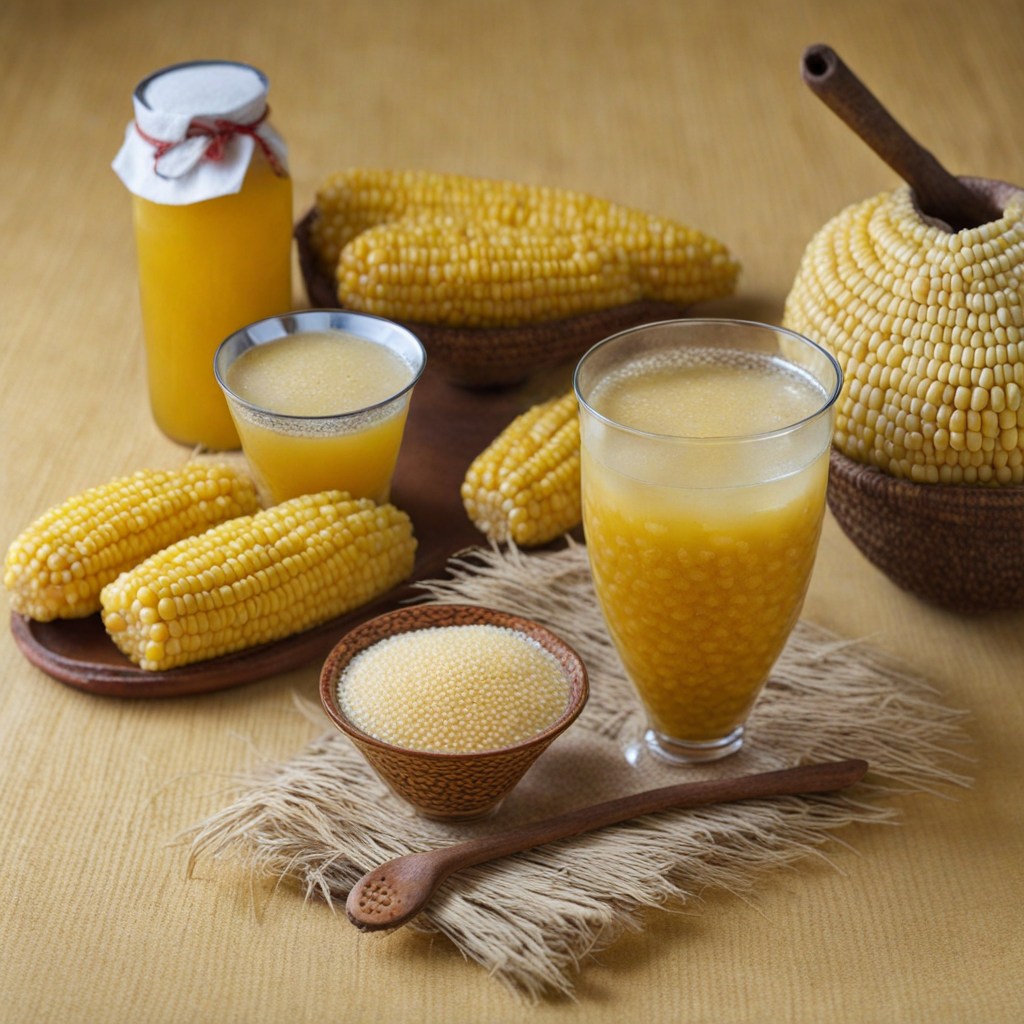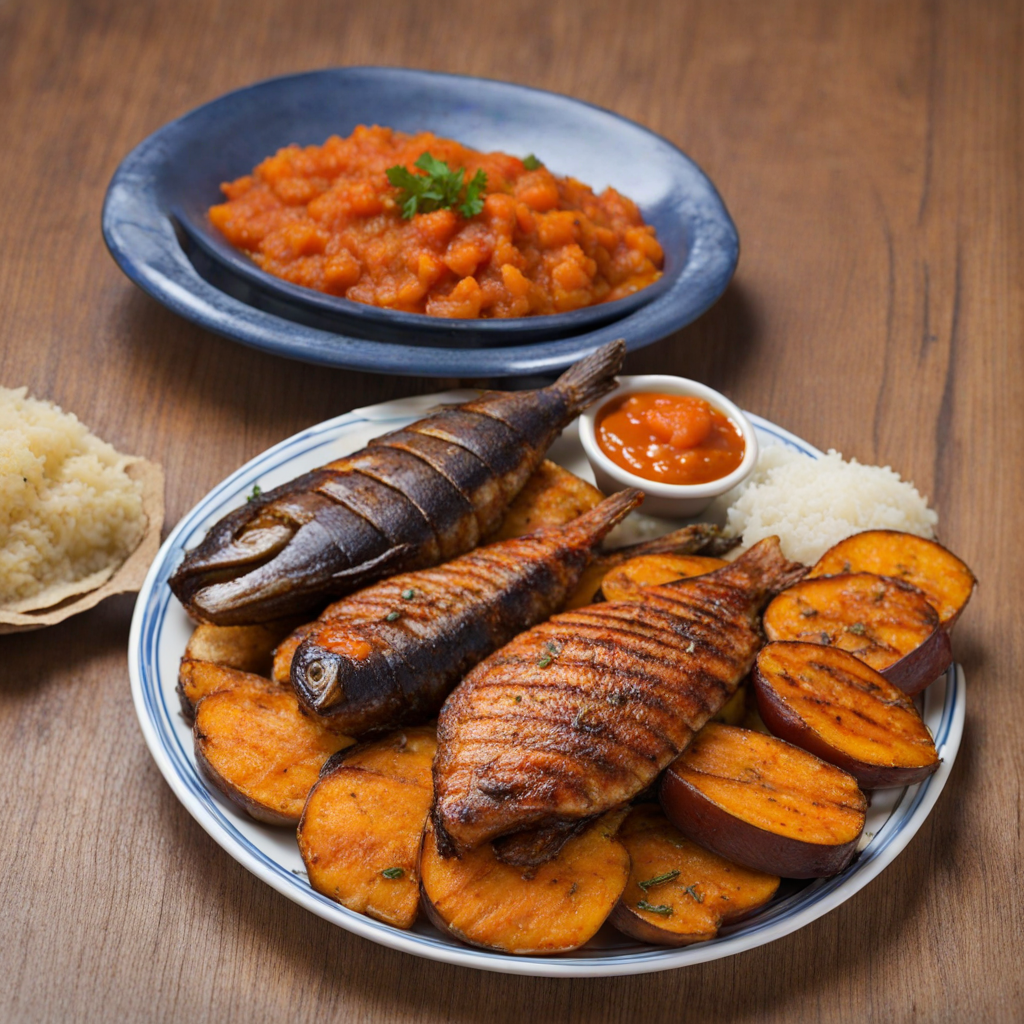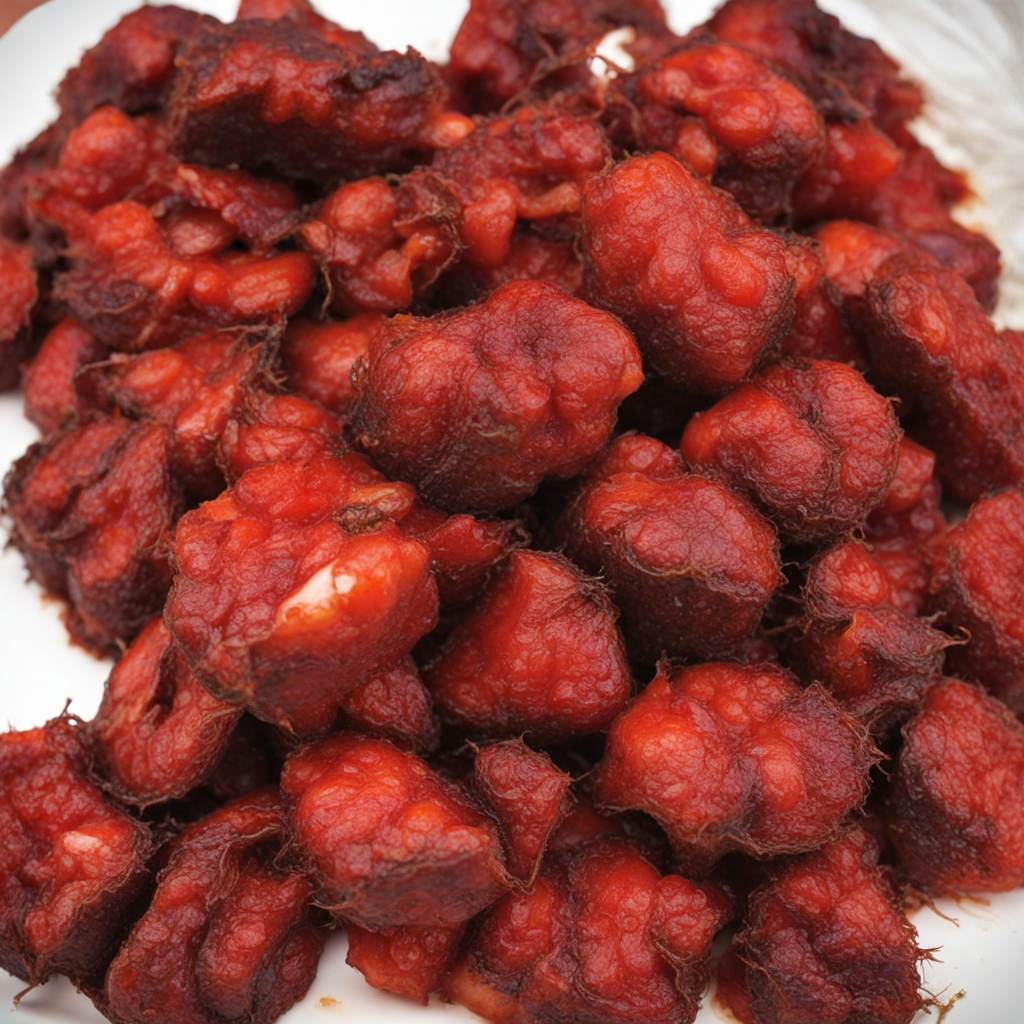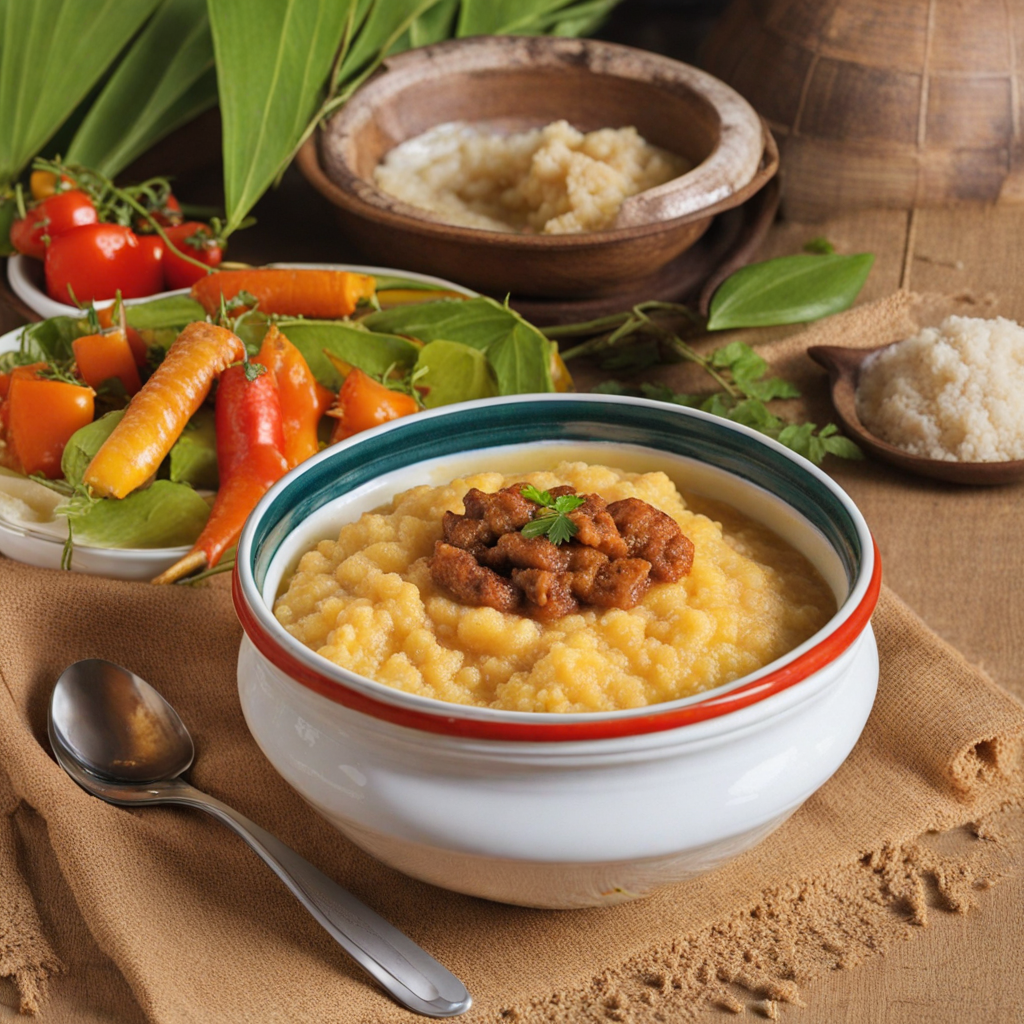Kissangua
Kissangua is a traditional Angolan dish that embodies the rich culinary heritage of the region. It is a thick, savory porridge made primarily from fermented corn, which gives it a unique tangy flavor and delightful texture. The fermentation process not only enhances the taste but also adds a nutritious element, making it a staple food in many Angolan households. Typically enjoyed during communal meals, Kissangua captures the essence of Angolan culture through its preparation and consumption, often bringing families and friends together around the table. The dish is commonly served with a variety of accompaniments, such as stews, grilled meats, or sautéed vegetables, which allow for a delightful mix of flavors and textures. The combination of the creamy porridge and the savory toppings creates a satisfying and hearty meal. Each region in Angola may have its own twist on Kissangua, incorporating local ingredients and spices that reflect the diversity of the country's culinary landscape. For those looking to explore new tastes, Kissangua offers a delightful experience that is both comforting and intriguing. Its unique fermentation process provides a depth of flavor that is unlike anything else, while the versatility of the dish means there's always a new combination to try. Whether you enjoy it plain or dressed with flavorful accompaniments, Kissangua promises to be a memorable addition to your culinary adventures.
How It Became This Dish
Kissangua: A Culinary Journey Through Angola Kissangua is a traditional Angolan dish that exemplifies the rich tapestry of the nation’s culinary heritage. This unique dish, often likened to a porridge or a thick soup, is made primarily from maize (corn) flour and is typically served with a variety of accompaniments. The history of Kissangua is deeply intertwined with the cultural, social, and agricultural practices of Angola, reflecting the influences of indigenous traditions, colonial encounters, and adaptations over time. #### Origin and Ingredients The origin of Kissangua can be traced back to the indigenous communities of Angola, who have cultivated maize for centuries. Maize, originally from Mesoamerica, was introduced to Africa, including Angola, by Portuguese colonizers in the late 15th century. This introduction coincided with the establishment of colonial trade routes and agricultural practices that transformed the continent’s culinary landscape. Kissangua is primarily made from maize flour, which is combined with water to create a thick, smooth porridge-like consistency. The dish is often enriched with ingredients such as fish, meat, beans, and leafy vegetables, depending on regional availability and personal preferences. Variations of Kissangua exist, with some incorporating ground peanuts or palm oil, adding layers of flavor and nutrition. #### Cultural Significance Kissangua holds a special place in Angolan culture, serving not only as a staple food but also as a symbol of community and togetherness. It is often prepared for communal gatherings, celebrations, and family meals, reinforcing bonds among individuals and groups. The act of sharing Kissangua is an expression of hospitality, reflecting the values of generosity and unity that are central to Angolan society. In many Angolan households, the preparation of Kissangua is a ritual passed down through generations, with each family imparting its unique twist on the dish. This aspect of culinary heritage emphasizes the importance of oral traditions and the transmission of knowledge within families and communities. Additionally, Kissangua is often served during significant life events, such as weddings and funerals, embodying the spirit of togetherness and remembrance. #### Historical Context and Development The history of Kissangua cannot be fully understood without considering the broader historical context of Angola. The country has endured centuries of colonial rule, which has profoundly influenced its cultural and culinary evolution. The Portuguese colonization, which began in the late 15th century and lasted until the mid-20th century, introduced new ingredients and cooking techniques that were integrated into traditional Angolan cuisine. During this period, Kissangua evolved to accommodate the tastes and practices of both indigenous people and Portuguese settlers. The incorporation of ingredients such as fish, often sourced from Angola’s extensive coastline, is a testament to this blending of culinary traditions. The use of spices and cooking methods from Portuguese cuisine also found their way into Kissangua, enhancing its flavors and expanding its appeal. Post-independence in 1975, Angola experienced significant social and economic changes that impacted food production and consumption. The civil war that ensued for decades disrupted agricultural practices, leading to food scarcity and reliance on international aid. Despite these challenges, the resilience of Angolan culture prevailed, and traditional dishes like Kissangua remained a mainstay in the diet of many Angolans. #### Regional Variations As with many traditional dishes, Kissangua exhibits regional variations that reflect local ingredients and preferences. For example, in coastal areas, the dish may be enriched with seafood, while in the interior regions, it might include game meats or fowl. The texture and consistency of Kissangua can also vary; some prefer a thicker, heartier version, while others enjoy a lighter, more soupy iteration. In urban centers like Luanda, the capital city, modern twists on Kissangua have emerged. Contemporary chefs and home cooks experiment with flavors, incorporating international ingredients while honoring traditional methods. This evolution is a reflection of Angola's growing culinary scene, where traditional dishes are celebrated and reimagined. #### Kissangua in Modern Times In recent years, there has been a resurgence of interest in traditional Angolan cuisine, driven in part by a younger generation eager to reconnect with their cultural roots. Food festivals, culinary workshops, and social media have played significant roles in promoting dishes like Kissangua, allowing Angolans both at home and abroad to share their culinary heritage. Moreover, the global food movement has sparked curiosity about lesser-known cuisines, leading to a growing appreciation for Kissangua among food enthusiasts and chefs worldwide. This increasing visibility has not only helped preserve the dish’s traditional elements but has also encouraged dialogue about the importance of cultural identity in culinary practices. #### Conclusion Kissangua is more than just a dish; it is a reflection of Angola’s history, culture, and resilience. Rooted in the agricultural practices of indigenous populations and shaped by centuries of colonial influence, this beloved Angolan staple has adapted and evolved over time while remaining a symbol of community and togetherness. As Angola continues to navigate the complexities of modern life, Kissangua stands as a testament to the enduring power of food as a vessel for cultural expression and identity. Through its rich history and cultural significance, Kissangua invites us to explore not only the flavors of Angola but also the stories and traditions that make its cuisine unique. As we savor each bite, we are reminded of the shared human experience that transcends borders, uniting us through the universal language of food.
You may like
Discover local flavors from Angola







